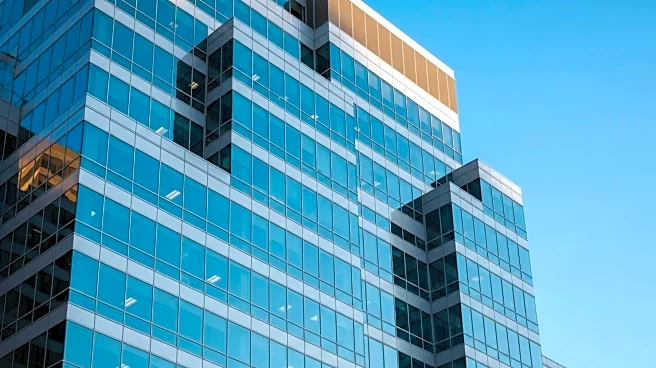What's Happening?
Manhattan office leasing has seen a significant increase, with August figures showing a 20% rise compared to July, reaching 3.7 million square feet. This is well above the 10-year monthly average of 2.72 million square feet, according to a report from Colliers. If this demand continues, Manhattan's yearly leasing volume could exceed 40 million square feet for the first time since 2019. The market has returned to pre-pandemic levels, with an average of 32 to 33 million square feet leased annually over the past 25 years. Factors contributing to this surge include a return to office work, low unemployment, and the reemergence of key industries such as technology. Amazon alone has leased over a million square feet since November 2024, utilizing leases, subleases, and enterprise agreements with coworking spaces like WeWork.
Why It's Important?
The resurgence in Manhattan office leasing is a positive indicator for the commercial real estate market, suggesting a recovery from the pandemic's impact. This trend reflects broader economic stability, with low unemployment and increased activity in key sectors like technology. Companies are increasingly returning to office spaces, which could lead to more investments in commercial properties and boost related industries such as construction and real estate services. Institutional investors and large public companies may find new opportunities in this revitalized market, potentially leading to increased economic activity and job creation in the region.
What's Next?
If the current leasing trend continues, Manhattan could see its highest annual office leasing volume since 2019, potentially exceeding 40 million square feet. This could attract more businesses to the area, further stimulating economic growth. Stakeholders such as real estate developers, investors, and local government may focus on supporting infrastructure and services to accommodate this growth. Additionally, the continued interest from major companies like Amazon could lead to more strategic partnerships and investments in coworking spaces and flexible office solutions.
Beyond the Headlines
The increase in office leasing may also have cultural implications, as it signals a shift back to traditional office environments after years of remote work. This could influence workplace dynamics, employee expectations, and corporate policies. Additionally, the demand for office space might drive innovation in building design and sustainability practices, as companies seek to create attractive and efficient workspaces.











